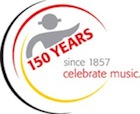David's Tip of the Day: Transcribing Tip - History of Slowdown and A/B Repeat
Before machines and software existed to slow music down we had no choice but to learn/transcribe music at its full tempo. You could change the speed on your record player or use your thumb to slow down the record’s rotation, but the result was a change of key (and not dead-on… it wasn’t like you could grab another key of harp and you were good to go). When Marantz came out with their tape recorder with half speed playback we teachers picked it up (it was expensive… around $600 if I remember correctly). At 50% slow it stayed in the same key (one octave lower), but 50% is REALLY slow, and the octave-below playback was unintelligible at times, so the feature was seldom used.
The first CD players to slow playback were used by dance and exercise instructors that wanted to be able to taylor the exact speed of their music, but once again the pitch was changed. The exciting feature that started showing up around the same time was A/B repeats. With an A/B repeat you could set a start point (A) and end point (B) and it would repeat that section (the lick you were trying to learn) until you stopped it… cool! No more picking up the record player needle, rewinding the tape, or searching a CD track and guessing where the right spot was… VERY cool! This feature remains as important of a feature as slowing the music down (now the feature is simply called “loop”).
Marantz finally came out with the PSD220 which was a fully-digital slowdown CD player that can slow down the music in 1% increments without changing the pitch and set A/B repeats… this was a big deal. Tascam many years later came out with a more affordable series (~$250 compared to ~$450) and it became standard equipment for musicians. Though it lacked some of the features and wasn’t very durable, the price won out.
When the Amazing Slow Downer and programs like it came out ($50 and less mind you), you could do everything the CD trainers did, and more. Now you can change speed and pitch at the same time (you were limited to one or the other in the past), save files in their changed format (which includes loops of the licks you’re trying to learn).
What software do you use?… and why. Share with everyone your process on our Facebook page facebook.com/bluesharmonica Have a great weekend!

